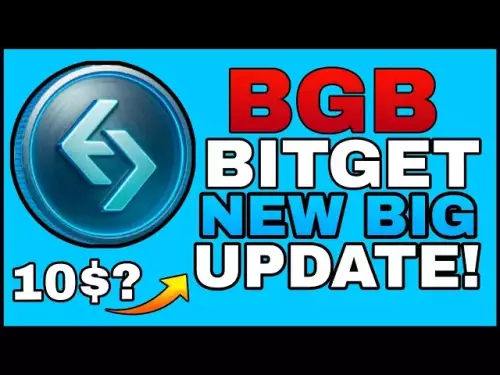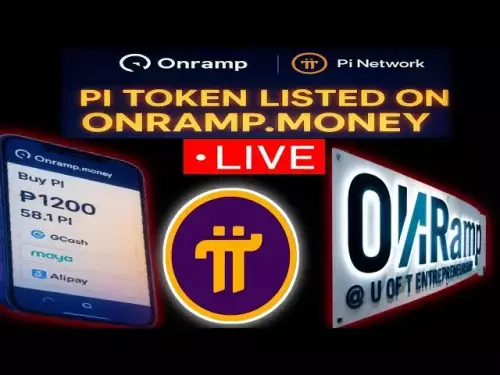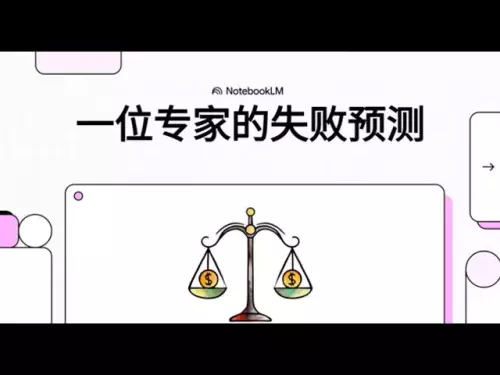 |
|
 |
|
 |
|
 |
|
 |
|
 |
|
 |
|
 |
|
 |
|
 |
|
 |
|
 |
|
 |
|
 |
|
 |
|
Cryptocurrency News Articles
Digital Art, New York, Gallery Reboot: A New Era for Web3 and Beyond
Sep 03, 2025 at 01:19 am
New York's art scene is experiencing a digital renaissance with the arrival of galleries like Offline and Heft, blurring the lines between Web3 and traditional art.

New York City's art world is undergoing a fascinating transformation, with 'Digital art, New York, Gallery reboot' initiatives leading the charge. New galleries are emerging, and digital art is becoming increasingly mainstream.
Digital Art Finds a Physical Home in NYC
The recent opening of galleries like SuperRare's Offline and Heft Gallery in the Lower East Side marks a pivotal moment for digital art. These spaces are not just about showcasing digital creations on screens; they're about fostering conversations and bridging the gap between the Web3 community and traditional art collectors.
Offline, SuperRare's physical marketplace, aims to provide digital art with a tangible presence. Mika Bar-On Nesher, Offline’s director, emphasizes the importance of experiencing digital art beyond screens. The gallery's inaugural show, 'Mythologies for a Spiritually Void Time,' featured works that expanded the definition of digital art, incorporating painting, sculpture, and animation.
Heft Gallery, founded by Adam Heft Berninger, focuses on artists who utilize systems like AI, code, and algorithms. Berninger believes that having a physical space is crucial for conveying the artist's process and the cultural significance of their work. Like Offline, Heft Gallery blurs the lines between digital and traditional art, showcasing sculptures, paintings, and ceramics that often come with a digital token.
Beyond the Hype: A Maturing Market
While the NFT boom of 2021 and 2022 has subsided, the commitment of galleries like Bitforms, which has championed digital art for 25 years, and the emergence of Canyon, a new space for video and digital art, indicate a long-term investment in the medium. Steven Sacks, the founder of Bitforms, highlights the importance of understanding the history of digital art when collecting in this area. Institutional support, such as LACMA's acquisition fund for digital art by women artists and MoMA's AI installation, further solidifies digital art's place in the mainstream.
The Evolution of Digital Art
Digital art redefines creative possibilities. The integration of digital technology in art challenges the old analog vs digital narrative and offers artists new ways to experiment with movement and interactivity. Platforms like Tezos support digital art's sustainability within a Web3 ecosystem and emphasize inclusivity and accessibility through global partnerships.
Challenges and Opportunities
Preserving digital art poses unique challenges. Initiatives like Tezos's Permanent Art Collection show the importance of active collaboration among artists, archivists, and developers. The use of AI in art also presents ethical considerations, requiring artists to approach this technology with awareness and responsibility.
My Two Cents
It's exciting to see New York leading the charge in integrating digital art into the mainstream. The opening of these galleries signals a shift in perception, recognizing digital art as a legitimate and evolving art form. The combination of physical spaces and digital tokens offers a unique experience for collectors, bridging the gap between the traditional art world and the Web3 community. The key to long-term success will be education, collaboration, and a commitment to preserving this dynamic art form.
Wrapping Up
So, there you have it, folks! The digital art scene in NYC is buzzing with innovation and fresh perspectives. It’s like watching a caterpillar turn into a beautiful, pixelated butterfly. Who knows what amazing creations will emerge next? Keep your eyes peeled—and your wallets ready (crypto accepted, of course!).
Disclaimer:info@kdj.com
The information provided is not trading advice. kdj.com does not assume any responsibility for any investments made based on the information provided in this article. Cryptocurrencies are highly volatile and it is highly recommended that you invest with caution after thorough research!
If you believe that the content used on this website infringes your copyright, please contact us immediately (info@kdj.com) and we will delete it promptly.



















![[Pycoin] PI Coin -Start introduction of practical use (emergency)?! Now .. 'Here' first you can use it first / How to accelerate mining #paikoin [Pycoin] PI Coin -Start introduction of practical use (emergency)?! Now .. 'Here' first you can use it first / How to accelerate mining #paikoin](/uploads/2025/09/02/cryptocurrencies-news/videos/pycoin-pi-coin-start-introduction-practical-emergency-accelerate-mining-paikoin/68b6ea848f2d1_image_500_375.webp)









































